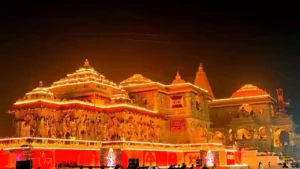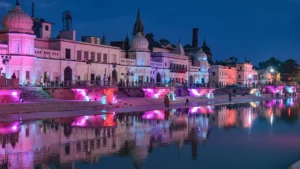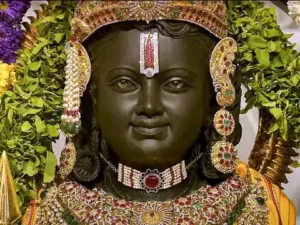Welcome to Utter Pradesh
Uttar Pradesh: India’s most populous state, is a cultural and historical tapestry that weaves together a rich heritage and diverse landscapes. Nestled in the northern part of the country, it is renowned for the Ganges River, which flows through its heart, offering spiritual significance and sustaining vibrant communities. The capital city, Lucknow, is a symbol of Nawabi grandeur with its architectural marvels and culinary delights. Agra, home to the iconic Taj Mahal, adds a touch of eternal romance to the state. Uttar Pradesh boasts a myriad of religious sites, including Varanasi, the spiritual capital of India, attracting pilgrims and seekers from across the globe. Beyond the cities, the state unfolds into fertile plains, historical forts, and wildlife sanctuaries like Dudhwa National Park. Despite its challenges, Uttar Pradesh remains a microcosm of India’s diversity, pulsating with energy, tradition, and a kaleidoscope of cultural experiences.
Climate
Summer (March to June):
The summer season is characterized by high temperatures and can be quite hot. Daytime temperatures often soar above 40 degrees Celsius (104 degrees Fahrenheit), especially in the central and western parts of the state. The heat is accompanied by dry conditions, and the onset of summer heralds the arrival of the Indian monsoon.
Monsoon (July to September):
The monsoon season brings relief from the scorching heat, with rainfall occurring across the state. The eastern and northern regions generally receive more rainfall than the western parts. The temperature drops and humidity levels rise during this period.
Post-Monsoon (October to November):
After the monsoon, the post-monsoon period sees a gradual reduction in rainfall. Temperatures start to decrease, and the weather becomes more pleasant. It’s a transitional phase leading into winter.
Winter (December to February):
Winter in Uttar Pradesh is generally cool and dry. Temperatures vary across the state, with the northern plains experiencing colder temperatures than the southern regions. Nighttime temperatures can drop significantly, and fog is common, especially in the western parts of the state.
Uttar Pradesh’s climate is influenced by its diverse topography, ranging from the Gangetic plains to the foothills of the Himalayas. The state experiences the typical climate patterns of the Indian subcontinent, with variations in temperature and precipitation based on geographic location.
Culture
Uttar Pradesh, often referred to as the “Heartland of India,” boasts a rich and diverse cultural tapestry that reflects the historical, religious, and artistic heritage of the region. The state, with its sprawling cities and rural landscapes, serves as a melting pot of traditions, festivals, and artistic expressions.
Religious Diversity: Uttar Pradesh is home to some of India’s most sacred pilgrimage sites, making it a significant center for diverse religious practices. The city of Varanasi, situated along the sacred Ganges River, is a spiritual hub for Hindus. Ayodhya, the birthplace of Lord Rama, and Mathura, associated with Lord Krishna, are integral to the Hindu religious landscape.
Festivals and Celebrations: The state comes alive during festivals, with elaborate celebrations that showcase its vibrant cultural spirit. Diwali, Holi, and Eid are celebrated with zeal, fostering a sense of unity and communal harmony. Kumbh Mela, a massive religious gathering held at the confluence of the Ganges, Yamuna, and Saraswati rivers, is one of the largest gatherings of humanity on Earth.
Art and Craft: Uttar Pradesh has a rich tradition of arts and crafts, with intricate handloom textiles, pottery, and woodwork. The city of Lucknow is renowned for its traditional Chikan embroidery and the elegant Nawabi culture, which has left an indelible mark on the region’s lifestyle and cuisine.
Culinary Delights: The state’s cuisine is a delectable blend of flavors, with iconic dishes like kebabs, biryanis, and chaats. The culinary landscape reflects a fusion of Mughlai, Awadhi, and local flavors, making it a paradise for food enthusiasts.
Classical Music and Dance: Uttar Pradesh is a cradle of classical arts, with Varanasi being a significant center for classical music. The Benaras Gharana, a prominent school of Indian classical music, has produced renowned musicians. Kathak, a classical dance form, also has deep roots in the cultural fabric of the state.
Literary Heritage: The state has a rich literary tradition with legendary poets like Tulsidas, Kabir, and Surdas hailing from the region. Urdu and Hindi literature have flourished, and Lucknow, in particular, has been a historical center for poetic and cultural gatherings.
Uttar Pradesh’s culture is a dynamic amalgamation of tradition and modernity, embodying the essence of India’s diverse cultural mosaic. The state’s vibrant heritage continues to captivate and inspire, leaving an indelible mark on the cultural landscape of the nation.
Safe and Secure
Uttar Pradesh, a land steeped in history and cultural richness, warmly welcomes visitors with its blend of heritage, hospitality, and vibrant landscapes. Boasting iconic monuments such as the Taj Mahal in Agra and the spiritual city of Varanasi, the state offers a tapestry of experiences. With a commitment to safety and security, Uttar Pradesh ensures a traveler-friendly environment. From the bustling markets of Lucknow to the serene ghats along the Ganges, visitors can immerse themselves in diverse traditions and flavors, all while feeling assured of their well-being. Explore the grandeur of palaces, savor delectable cuisine, and engage with the warmth of its people — Uttar Pradesh beckons with a promise of an enriching and secure journey. ( Police helpline no_100 )
1). Agra




9). Kanpur






















































1 thought on “Best places to visit in Uttar Pradesh India”